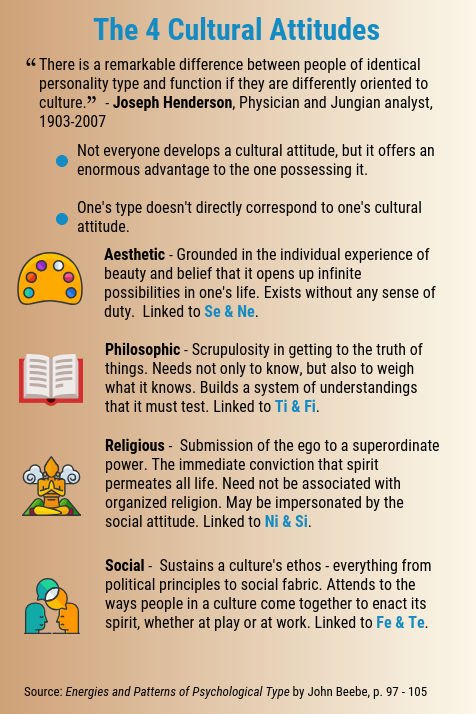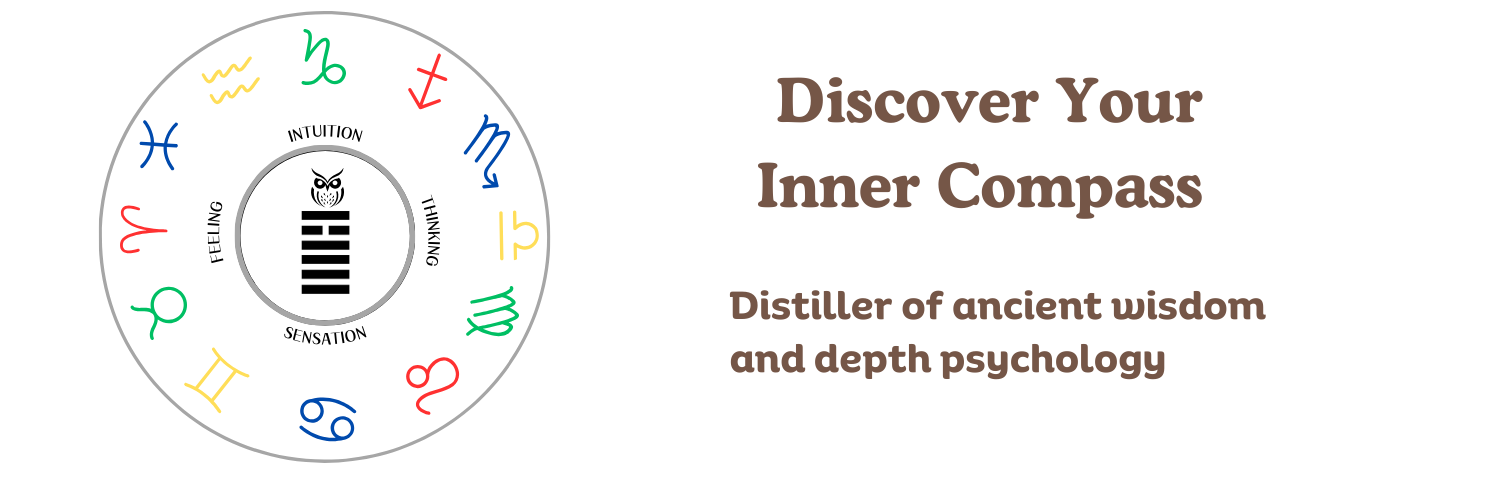Why are people with the same personality type so different from each other?
One reason could be the four cultural attitudes. See the below infographic
Joseph Henderson, M.D. developed this idea 90 years ago. He was analyzed by Jung and eventually became an analyst. John Beebe was analyzed by Henderson.
Beebe loosely links two of the functions to each attitude, with the understanding that any type can adopt any of the four attitudes.
Henderson said the way to figure out someone’s cultural attitude is to notice how people choose to spend their optional cultural time. One can start by asking oneself, “How did I spend my weekend?”
My cultural attitude is the religious one, with some philosophic and social flavors to it. What’s yours?

Mike Silberstein, who wrote this excellent post about the four positive aspirations of the functions (joy, wisdom, knowledge, intelligence). mentioned to me that the four cultural attitudes are comparable to the positive aspirations. Here is how he explains it:
“So the type of spontaneous joy that Se and Ne has allows them to tap into the immediate possibilities and direct opportunities that the moment brings. There is a love for the ‘color’, ‘variety’ and sense of infinite possibilities and opportunities that can arise at any moment. As a result, an immediate interaction with aesthetic events in the here and now is something that Oe does fantastically well. They can simply dive into these possibilities and feel a sense of spontaneous enjoyment and appreciation for what that moment brings.
For Ti and Fi, they are using their ‘intelligence’ (logical or ethical) to tap into those areas that they believe are right, valid, and accurate. They are tapping into a philosophical realm (akin to an internal compass) where they are deliberating within themselves to identify those areas of ethical and moral truths. Once they do that, they can staunchly defend those truths as proper ways to handle whichever scenarios may come up.
For Ni and Si, they are all about acquiring ‘knowledge’ as a means towards having a ‘map’ of either highly detailed or holistic understandings about their world. This causes the Ni/Si user to capture a wider set of beliefs and worldviews about the order within the universe in a way that feels highly spiritual/religious. As they observe (and catalog) increasingly more regarding how the outer world operates, they are able to integrate new knowledge/information with what they already know and believe.
For Fe and Te, the goal is to manage and regulate the activities in the outer world in a manner that is socially and/or logistically effective/efficient. The capacity to take the data of the outside world and to integrate and orchestrate it in a manner that successfully works (either socially or logistically) requires a highly dynamic understanding of the needs of the moment and a way to execute/implement a certain (algorithmic) set of plans in an effective manner. To address each of these concerns in real time requires the internal (leadership) wisdom of the individual in a way that is similar to a conductor leading an orchestra.”
